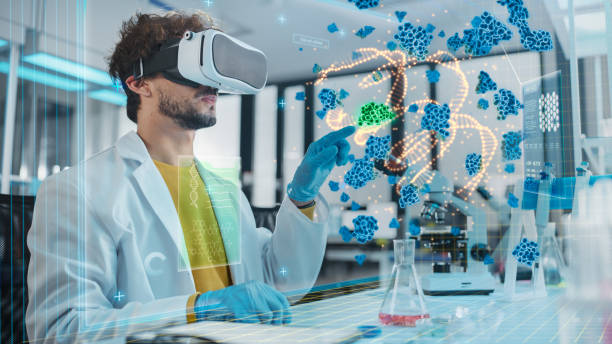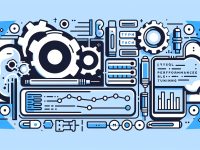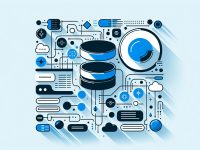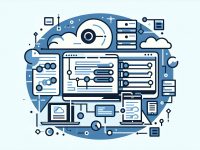How Does AI Work
The fundamental presence of Artificial Intelligence operates within society although most people fail to recognize its impact. Artificial Intelligence has started to integrate into daily life through the functions of Apple’s Siri along with Google’s search engine algorithms as well as self-driving vehicles that operate on roads. But How Does AI Work? The power behind this technology together with its advantages for business people and everyone else remains unclear. This article will describe artificial intelligence systems while explaining essential AI components alongside showing recent AI uses and patterns.

Introduction to AI
The discussion on AI operation requires an initial definition of artificial intelligence to reach a better understanding. AI refers to the simulation of human intelligence in machines. The systems seek to duplicate human cognitive functions because they perform learning tasks reason make decisions and demonstrate visual perception. The goal is to create equipment able to perform activities exclusively performed by humans including speech identification and decision processes.
But How Does AI Work? The system harnesses learned algorithm logic which establishes its dynamic character for automatic learning while improving its performance without direct human involvement.
Key Components of AI
A basic comprehension of AI operation requires first determining its fundamental components. These include:
The practice of training an application or system through machine learning achieves better performance of given tasks by letting developers avoid direct programming. The systems use this capability to improve themselves automatically each day without any direct instructions. The operating algorithms serve as their only source for pattern recognition from various data groups while they avoid symbolic operations.
DL functions as one sub-topic of machine learning that trains computer systems to reach conclusions through artificial neural networks similar to human capability. The technology finds its peak application in three areas: computer visual processing systems, language engine translation systems, and speech recognition systems.
Through Natural Language Processing (NLP) an AI system receives the ability to understand human language and generate new language content. The technology allows devices to interact with people in the most mnemonically efficient and urgent manner since it powers systems from Amazon Alexa to website-based chatbots.
Artificial Intelligence uses Computer Vision as a tool to recognize digital image information including static and dynamic pictures. The applications of computer vision include facial recognition along with self driving cars and medical imaging systems which serve extensively in neural networks.
How Does AI Work? The Process Explained
Before proceeding we should look at what procedures make AI possible.
The foundation of all Artificial Intelligence depends on data collection fundamental for its operational success. AI achieves better results when there are diverse data sets that are directly related to its tasks. The data enters the system through various mechanisms including sensors as well as cameras coupled with user inputs. Through its online recommendation system, Netflix selects shows and movies that match viewing records from previous activities.
After data collection the required data will undergo processing. Computer systems follow defined rules known as algorithms which determine their decision to stay on the current link or find new links to traverse. The analysis scans the data to extract vital findings that AI uses as knowledge for learning purposes. The system achieves better data understanding and enhances prediction accuracy due to these patterns that exist in machine learning systems.
Learning and training machine learning models with data constitutes the final stage which leads to their development. All planning activities together with brainstorming and strategizing activities during the synthesis step produce their results. The Neural Network system examines computer-generated data to optimize forecast parameters for better performance. As time goes on the model’s precision improves substantially and it demonstrates growing competency in solving elaborate issues.
After its training concludes the AI can operate as it was trained to do by detecting situations and making equivalent decisions when responsible for making decisions. A medical AI system needs to learn diagnostic patterns from medical images to generate appropriate healthcare solutions. Financial operations benefit from AI systems by letting users detect market assets and understand the level of associated risks.
The training phase of AI constitutes only a starting point because it continues with feedback cycles. The system continues its development by receiving and processing feedback. New data and user inputs lead the system to modify the output results of its predictive and decision-making process. AI operates best in practical scenarios by applying this consistent process of learning.
Applications of AI in Daily Life
The immediate application of this concept shows direct relations with real-life functions. The current AI technology transforms numerous industries and makes fundamental changes in activities encountered by people during their daily routines. Here are a few examples:
The use of artificial intelligence represents a global initiative that helps doctors obtain suitable assessments of patient health and forecast their conditions. Certain models analyze medical images to recommend appropriate courses of action along with assisting pharmaceutical research.
Artificial Intelligence aids financial institutions by making key financial choices between detecting frauds and providing loans through its social application.
Self-driven vehicles utilize machine intelligence to recognize traffic control signs through which they make autonomous decisions while driving.
The technology behind self-driving vehicles operates like video games and behind it all stands the Artificial Intelligence system which makes program selections for content such as Netflix films and Spotify or YouTube music.
The application of AI in retail enables businesses to track inventories and maintain stock levels together with providing personalized products and services to customers while incorporating chatbots and virtual assistants.
How AI Impacts Business and Society
Managers applying AI in their organizations need fundamental knowledge about how this technology functions. The fundamental function of artificial intelligence enables businesses to reach greater market competitiveness by maximizing operational efficiency and workflow effectiveness and better data utilization. Businesses benefit from intelligent chatbots which answer customer inquiries together with predictive analytics tools which detect upcoming situations to guide organization preparation.
However, AI also presents challenges. Personal data protection and possible employee termination together with biased AI constitute the principal ethical matters arising from AI implementation. The deployment of this system requires careful attention to ensure the general population remains intact and its automated choices remain impartial and objective.
Conclusion
The research analysis in this paper explains the complete understanding process of artificial intelligence details. AI serves as a technology that studies complex data collections to discover predictive patterns that surpass human intellect for detection. The four fundamental elements of A. I consist of machine learning together with NLP deep learning and computer vision that purposefully organize components to create thought-driven collaborative devices for problem analysis and life advancement.

People and companies who try to understand AI’s workings and potential must understand that this technology represents a poor fit for most organizations and individuals. One must also learn the fundamental aspects since many ethical standards affect the execution process.
FAQs
How Does AI Work in Simple Terms?
The data-driven strategy of algorithm processing leads to decision output in basic language. The system extracts information from previous encounters (data) to use for new circumstances while improving performance over time. Computer systems leverage user history to present products the system determines compatible with each user’s previous usage behavior.
How Does AI Work in Healthcare?
The healthcare application of AI includes algorithms scanning patient information together with medical records in addition to MRI results and scholarly publications to assist doctors. The system combines features which enable predictions about patient outcomes and detects medical conditions and suggests suitable treatments depend on health assessment results.













0 Comments